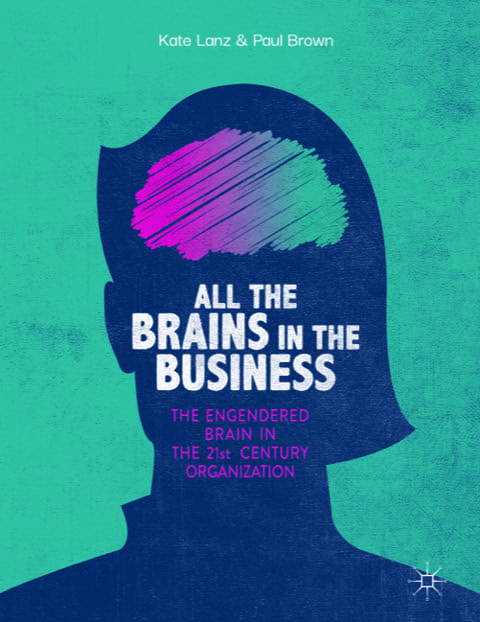CV Writing Tips to Land A Job In Diversity And Inclusion

To do so, businesses have had to actively look for talent that can implement diversity and inclusion practices, which has resulted in a boom of hiring in Q2 2020. The number of hires in diversity roles more than doubled in that period, which is remarkable in the current state of crisis – and the trend doesn’t seem to abate.
With this being the case, many people are seriously considering trying their chances at jobs that have a diversity and inclusion focus. However, while the demand for such talent is high, the competition for positions is also quite fierce, and you’ll need your CV writing skills to be as sharp as possible if you want to land a job. Here’s what you need to consider.
Know What A Diversity & Inclusion Position Is
First things first – no two diversity and inclusion positions are alike, even within the same company. Due to the fact that diversity and inclusion practices, initiatives, and positions are something of a novelty, no industry has a unified vision of what a diversity and inclusion job should be. The fact that companies are vastly different and have varying circumstances, needs, and requirements further complicates matters.
Some companies have taken an active interest in promoting fair treatment of their employees and making sure that the working conditions in their offices are as welcoming and inclusive as possible. These companies will be looking to add diversity and inclusion officers to their boards, whose jobs will be to make company policy that steers the business in that particular direction.
Companies going the extra mile to promote belonging will also need experienced managers who are well versed in diversity and inclusion to implement said policies.
Some companies that wish to push for more representation in their workforce will need to employ diversity recruiters. Those will need to be experienced HR specialists while also being trained in promoting diversity, equality, and belonging.
The pattern here should be obvious by now – having diversity and inclusion qualifications is usually an additional requirement, rather than the main function of the position in question. Sure, it’s an important part of the job – but a company looking for a diversity manager or diversity recruiter will probably seek experienced candidates, first and foremost. Take this into serious consideration and tailor your CV accordingly.
Emphasize Your Skills And Experience
Before you apply for a diversity and inclusion position at a company, you need to do your due diligence. Research the company and its products, achievements, and goals. Read through their press releases, and familiarize yourself with their way of doing things as much as possible.
Try to put yourself in the shoes of the recruiter – they will need to hire people to drive diversity and inclusion initiatives forward, that much is true. However, their most important job is to get people who are right for the position and right for the company. Make sure you take every opportunity to demonstrate that you are the best person for all of their needs.
Ideally, you should arrange your achievements, skills, and qualifications in a manner that would be most readable and useful to HR. Once you make sure all of your credentials are in check, make sure you modify each and every one of them to link them to fit the diversity and inclusion focus of that position.
Advertise Your Personal Qualities
Lately, companies have come to put a high value on soft skills, such as optimism, communication, openness, etc. The ability to deal with failure, the ability to work in stressful circumstances are especially relevant in the current crisis climate.
However, a job in diversity and inclusion requires a very particular set of qualities, such as empathy, emotional intelligence, and cultural sensitivity.
Moreover, being able to demonstrate that you have a deep personal commitment to the idea of inclusion and diversity will most likely be crucial for landing a job in this field of work. You will need to be outspoken about your ideas of implementing diversity and inclusion policies at every level of the company and convincing in your argument of why you’re the best candidate for the job.



 The coronavirus crisis is a wake-up call. It’s waking us up to what we need to pay attention to in order to live sustainable, healthy lives on this planet. It’s waking us up to the global leadership and cooperation that’s required to ensure our human survival. And it’s highlighting how the female brain is highly adapted to the actions that are needed — right now.
The coronavirus crisis is a wake-up call. It’s waking us up to what we need to pay attention to in order to live sustainable, healthy lives on this planet. It’s waking us up to the global leadership and cooperation that’s required to ensure our human survival. And it’s highlighting how the female brain is highly adapted to the actions that are needed — right now. Kate Lanz is the founder and CEO of Mindbridge, a UK-based global leadership company specializing in the power of modern neuroscience and releasing latent brain potential. She is the author of
Kate Lanz is the founder and CEO of Mindbridge, a UK-based global leadership company specializing in the power of modern neuroscience and releasing latent brain potential. She is the author of 
 Unseen millions are lost by companies every year; the result of employees withholding the full commitment of their physical, intellectual, and emotional contributions. Surveys conducted by the Gallup Organization identified an 18 percent difference in productivity between the best and worst performing companies.1 Yet, as we shall explain, even the best performing companies have room for improvement.
Unseen millions are lost by companies every year; the result of employees withholding the full commitment of their physical, intellectual, and emotional contributions. Surveys conducted by the Gallup Organization identified an 18 percent difference in productivity between the best and worst performing companies.1 Yet, as we shall explain, even the best performing companies have room for improvement.